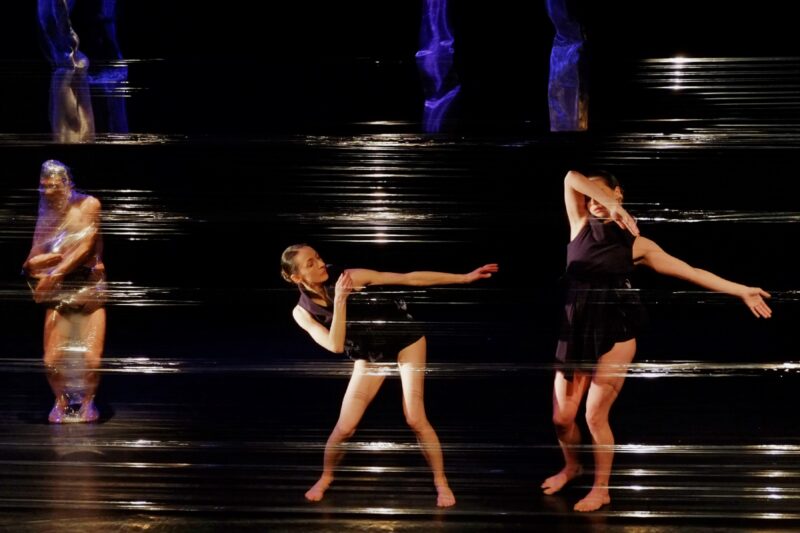Aira Naginevičiūtė

“Towers of Melancholy”. Photo by Martynas Aleksa
The dancer, choreographer and educator Aira Naginevičūtė (b. 1965) is an outstanding Lithuanian dance artist who creates complex large-scale dance productions with a deep philosophical rooting. She studied Choreographic Pedagogy at the Klaipėda Faculty of what was at the time Lithuanian State Conservatoire and perfected her knowledge of dance technique and composition at various international seminars in Austria, the UK, the USA, Germany, the Czech Republic, Estonia and Lithuania. In 1989, she established a contemporary dance troupe Fluidus, and in 2013, the dance theatre Airos. Naginevičiūtė has been teaching at the Lithuanian Academy of Music and Theatre since 1998.
Naginevičiūtė has created over 20 dance productions and compositions. Her most acclaimed works were put on during the past fifteen years: Pregnant Silence (Nėščia tyla, 2005), Ego and ID (2007, 2009) and The Moon does not Care about Barking Dogs (Mėnulis nepaiso lojančių šunų, 2008), as well as her triptych Chimera’s Beads (Chimeros karoliai, 2013), Glass Gardens (Stiklo sodai, 2015) and Towers of Melancholy (Melancholijos bokštai, 2016).
Naginevičiūtė has been called a ‘dark’ or ‘black’ choreographer because her productions are filled with heavy metaphors, while their themes are deep and complex. Her work is recognisable for meditativeness and an insight into the depths of a creator’s soul. That is why the dancers in this choreographer’s productions are not just performers, but personalities, who bring to life the roles or characters they embody.
Aira Naginevičiūtė was the first contemporary dance artist to win state recognition: her dance performance Processus was awarded the Lithuanian Ministry of Culture Prize for the best choreography of the year in 2003. In 2020, Naginevičiūtė was awarded the Lithuanian Government’s Award for Culture and Art for her merit to Lithuanian culture and art. Dance productions by this choreographer have travelled to Belarus, China, Estonia, Latvia, Norway, Poland, Sakartvelo and Senegal.
In her latest dance performance, Towers of Melancholy (Melancholijos bokštai, 2016), the choreographer speaks in poetic metaphors about the darkness and light of the human soul, about existential plenitude and the resilience of an artist. This production, weaving together poetry, music and movement, explores states that trigger threshold experiences. In such states, we contemplate fog, we die and are reborn as different beings, and then we plunge into deep reflections about our lives, the world and existential emptiness. In 2017, Towers of Melancholy opened the Kaay Fecc International Dance Festival in Dakar, Senegal.
info@airos.lt http://www.airos.lt